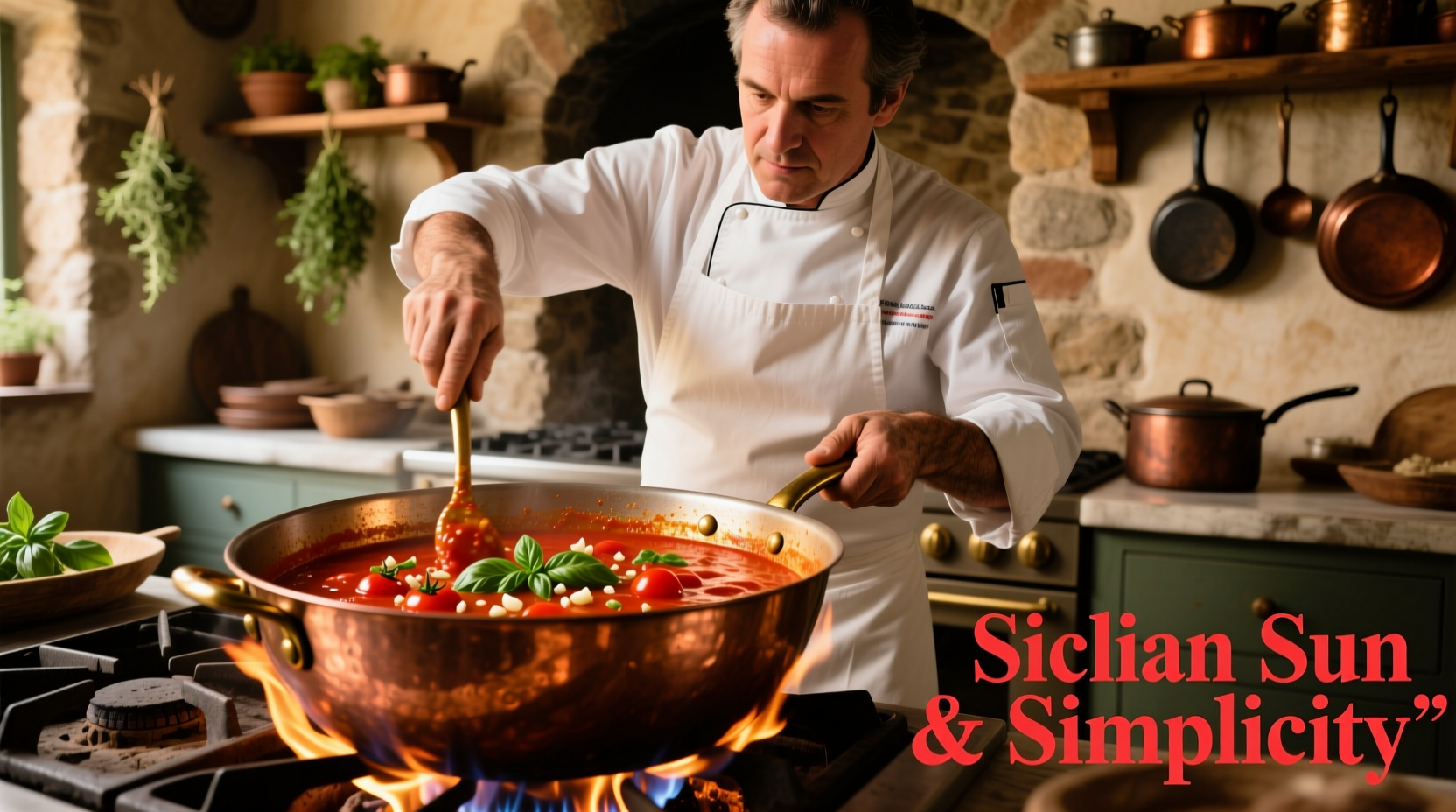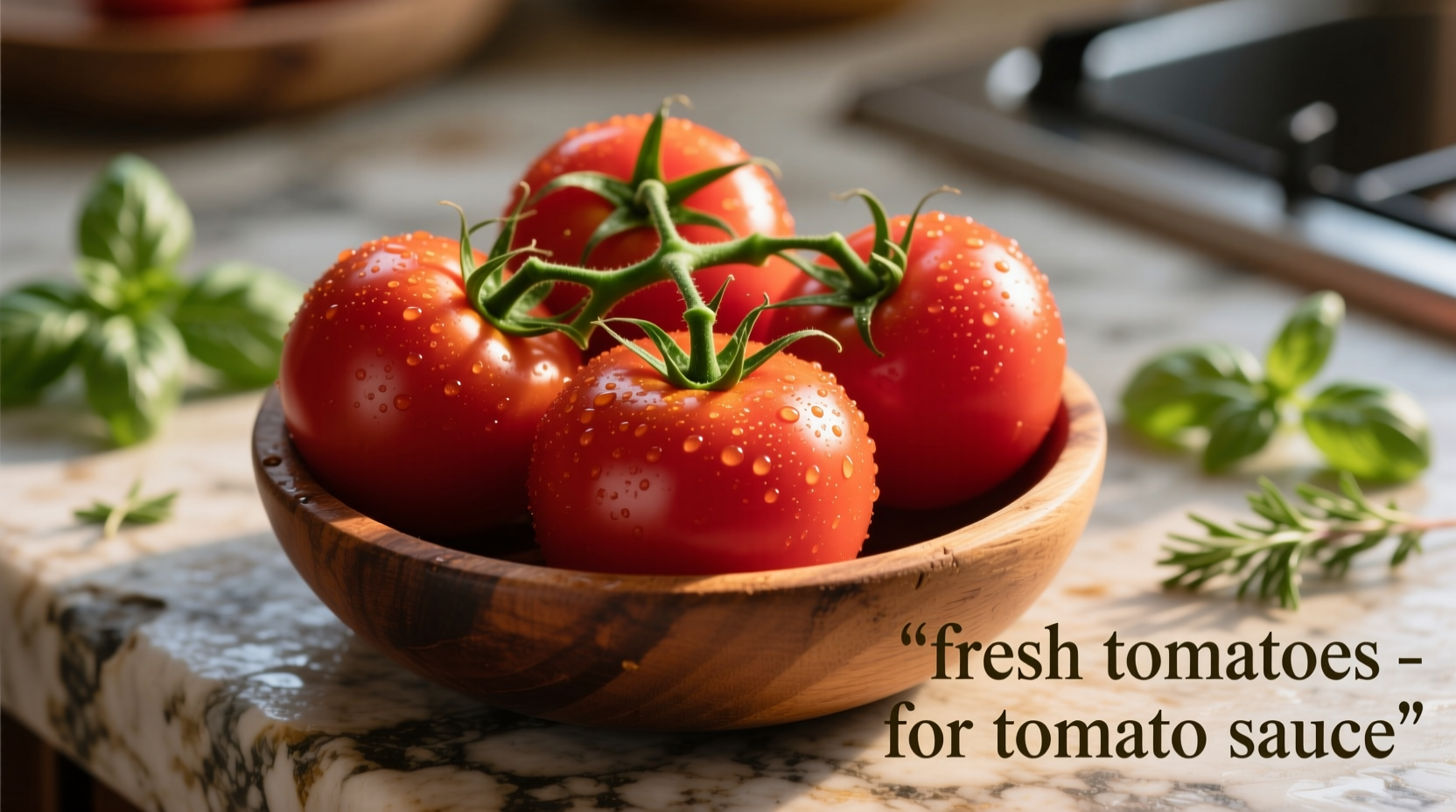There's nothing quite like the vibrant taste of homemade tomato sauce made from garden-fresh tomatoes. But not all tomatoes work equally well for sauce making—choosing the wrong variety can leave you with a watery, bland result that takes hours to reduce. As a chef who's made thousands of quarts of sauce, I've learned that understanding tomato biology and seasonal availability makes all the difference between an average sauce and an exceptional one.
Why Specific Tomato Varieties Matter for Sauce
Fresh tomatoes vary dramatically in their suitability for sauce making. The key factors are solid content (less water), natural pectin levels (for thickness), and balanced acidity. Commercial sauce producers actually measure "solids content"—the percentage of the tomato that isn't water—and prioritize varieties scoring above 5.5%.
| Tomato Variety | Solids Content | Best For Sauce? | Flavor Profile |
|---|---|---|---|
| Roma (Plum) | 6.2% | ★★★★★ | Balanced sweet-tart |
| San Marzano | 6.8% | ★★★★★ | Complex, less acidic |
| Amish Paste | 6.0% | ★★★★☆ | Sweet, rich |
| Beefsteak | 4.3% | ★☆☆☆☆ | Mild, watery |
| Cherry | 5.1% | ★★★☆☆ | Intensely sweet |
This data from the USDA Agricultural Research Service confirms what professional sauce makers know: paste tomatoes consistently outperform other varieties. San Marzanos, particularly those grown in Italy's Sarno River valley (protected by DOP certification), contain nearly 50% more solids than common slicing tomatoes.
Seasonal Timing: When Fresh Tomatoes Shine
Tomato seasonality dramatically impacts sauce quality. Here's the optimal timeline for sauce making:
- Early Season (July): Smaller tomatoes with higher acidity—ideal for bright, fresh sauces
- Peak Season (August-September): Maximum sugar development with balanced acidity—perfect for rich, complex sauces
- Late Season (October): Larger fruits with lower acidity—best for blending with early season tomatoes
According to the University of Minnesota Extension, tomatoes harvested at peak vine-ripeness contain 30% more lycopene and develop more complex flavor compounds than those picked green and ripened off-vine. This directly translates to deeper, more nuanced sauce flavors.

When Fresh Tomatoes Aren't the Best Choice
Despite the appeal of fresh ingredients, there are specific contexts where canned tomatoes actually produce superior sauce:
- During winter months when fresh tomatoes are shipped long distances
- When making large batches requiring consistent texture
- For pressure-canning safety with low-acid varieties
The National Center for Home Food Preservation notes that commercially canned tomatoes are processed within hours of harvest at peak ripeness, often preserving more nutrients than "fresh" supermarket tomatoes that may have been in transit for weeks. This explains why many Italian chefs prefer San Marzano DOP canned tomatoes year-round.
Professional Preparation Techniques
Follow these chef-tested methods for perfect fresh tomato sauce:
Peeling Without Water Bath
Forget the boiling water method that dilutes flavor. Instead:
- Cut shallow "X" on blossom end of each tomato
- Place under broiler for 60-90 seconds until skin blisters
- Peel starting from the blistered "X"—skin should slide off cleanly
Seed and Gel Removal
The gel surrounding tomato seeds contains most of the water. For thicker sauce:
- Cut tomatoes in half horizontally across the equator
- Gently squeeze to expel seeds and excess gel
- Scrape remaining gel with a spoon
Concentrating Flavor
Before simmering, spread seeded tomatoes on a baking sheet and roast at 300°F (150°C) for 45 minutes. This caramelizes natural sugars and reduces water content by 25%, creating an intensely flavorful base that simmers down faster.
Troubleshooting Common Sauce Problems
Even with perfect tomatoes, issues can arise. Here's how to fix them:
- Watery sauce: Add 1 tablespoon tomato paste per quart during cooking—it contains concentrated solids that absorb excess moisture
- Bland flavor: Stir in 1/4 cup of the cooking water from whatever pasta you'll serve with the sauce—the starch helps the sauce cling and enhances flavor perception
- Too acidic: Add a small pinch of baking soda (1/16 teaspoon per quart) to neutralize without making sauce taste flat
Preserving Your Fresh Tomato Sauce
For safe long-term storage:
- Acidify with lemon juice (1 tbsp per pint) to ensure pH below 4.6
- Process in boiling water bath for 35 minutes (pints) or 40 minutes (quarts)
- Alternatively, freeze in portion-sized containers with 1/2 inch headspace
The National Center for Home Food Preservation emphasizes that proper acidification is critical for preventing botulism in home-canned tomato products, especially with lower-acid heirloom varieties.
Final Pro Tips
Before you start your next batch, remember these chef secrets:
- Add basil stems during cooking (remove before serving) for deeper herbal notes
- Finish with a splash of good olive oil off-heat to preserve fresh flavor
- Never add salt until tomatoes have reduced by half—early salting draws out more water











 浙公网安备
33010002000092号
浙公网安备
33010002000092号 浙B2-20120091-4
浙B2-20120091-4